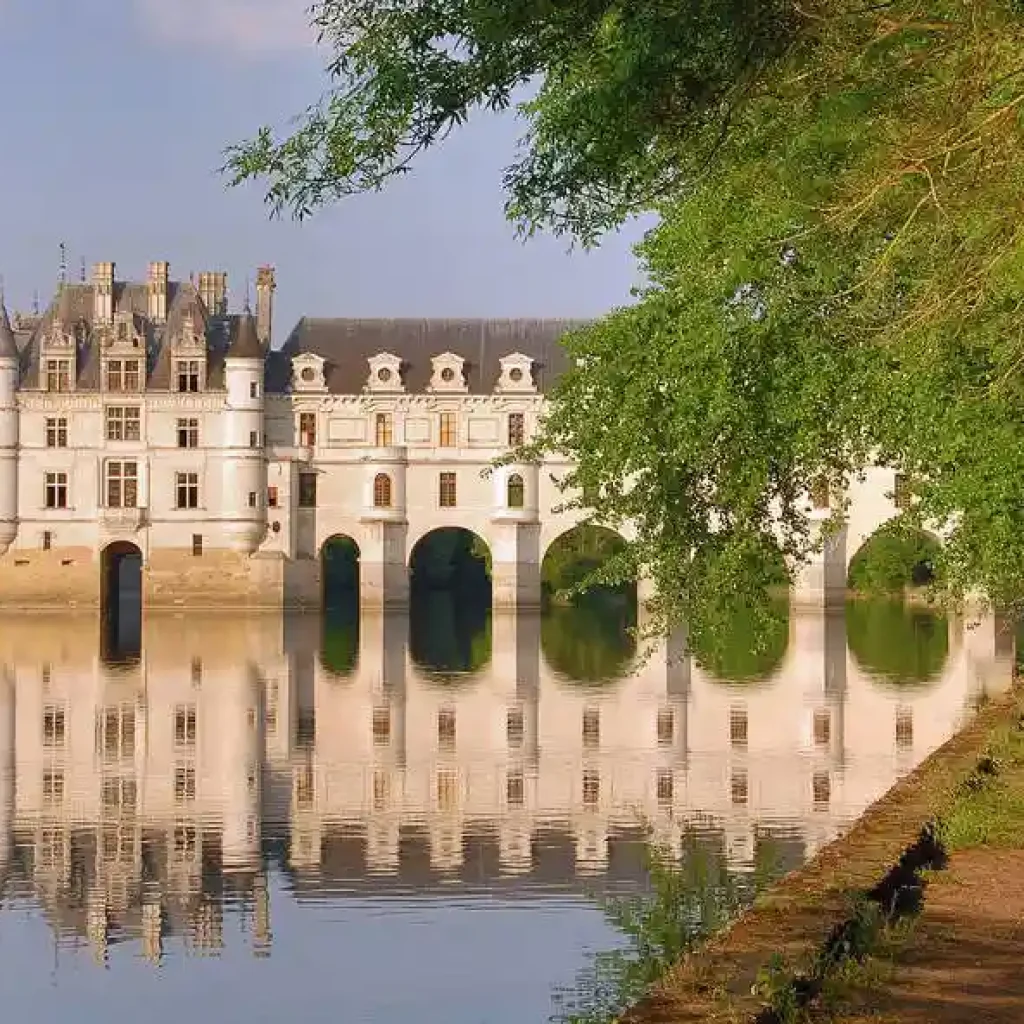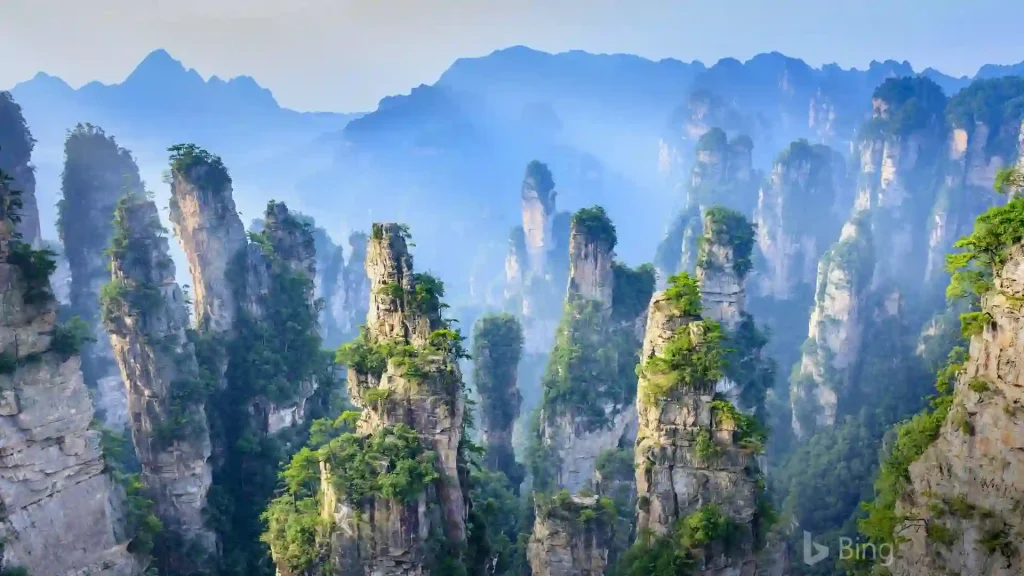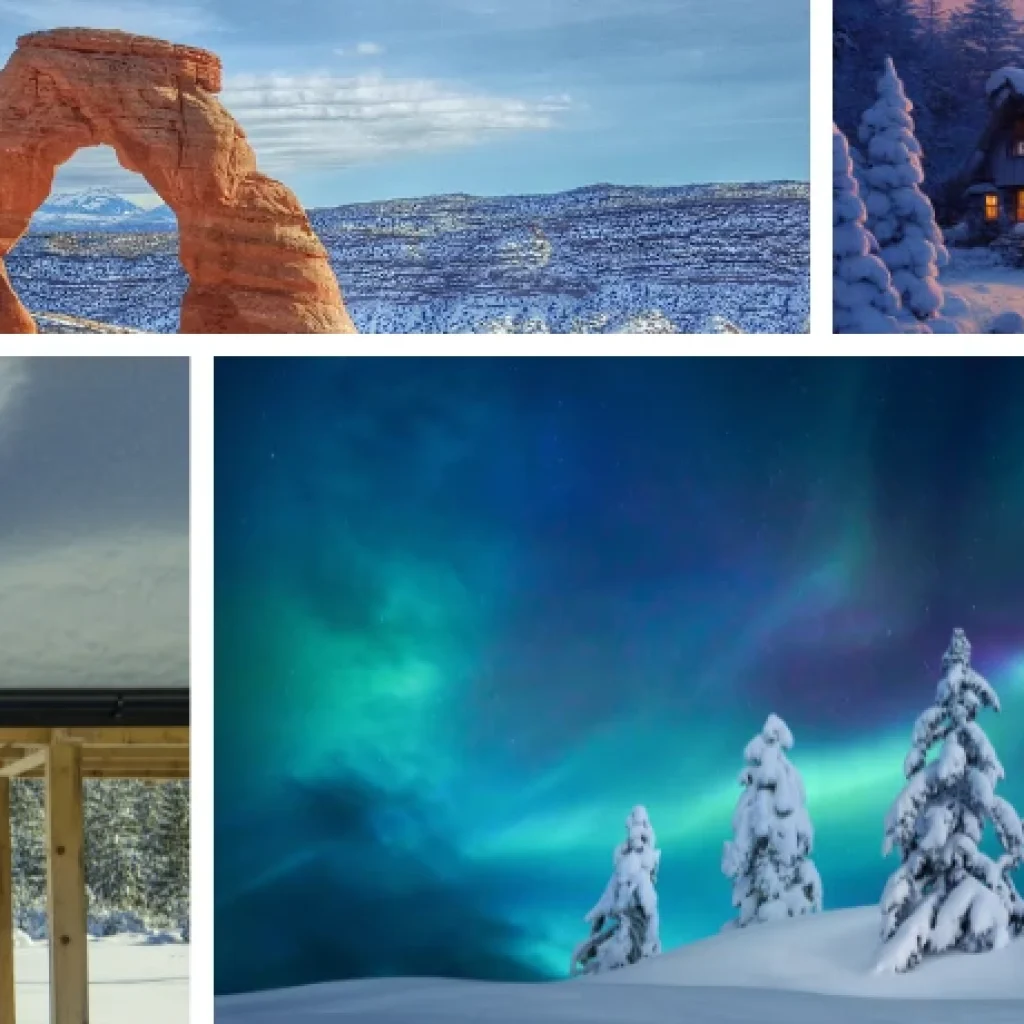10 Interesting Facts About the Blue Ridge Mountains (2025 Travel Edition)
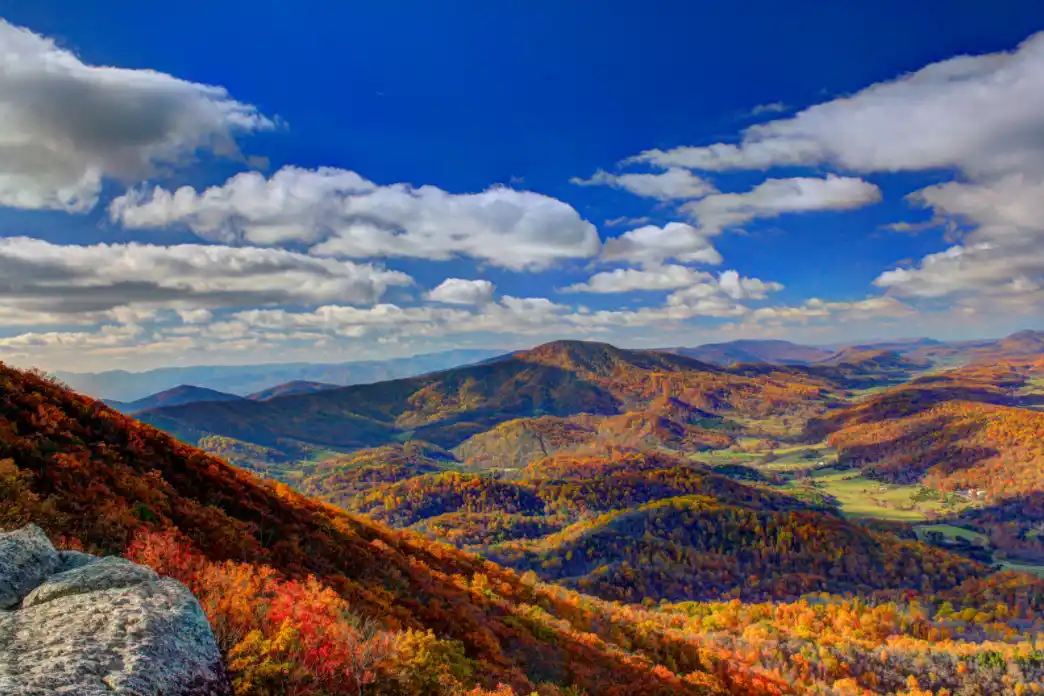
When you think about the 10 interesting facts about the Blue Ridge Mountains, chances are the first image that pops into your head is that dreamy blue haze hovering above endless ridges.
That soft tint isn’t just poetic—it’s chemistry at work, part of what makes this stretch of the Blue Ridge unlike anywhere else. Add in ancient geology, quirky microclimates, and scenic drives like the Blue Ridge Parkway, and you’ve got a region that doubles as both a classroom and a playground.
What makes these mountains so fascinating is how everyday visitors can witness the science and history in real time. Whether you’re pulling over at an overlook, walking a short stretch of the Appalachian Trail, or learning about Cherokee history in North Carolina, every ridge tells a story.
In this guide, I’ll share insider details from mileposts to quirky traditions that help transform simple sightseeing into a richer journey.
So grab a map, plan a few detours, and let these ten facts serve as micro-guides for your next trip into the Blue Ridge Mountains.
Get Directions To Blue Ridge Mountains 👇
Quick 10 Interesting Facts About the Blue Ridge Mountains
Here’s a snapshot for quick reference before we dive deeper:
| Feature | Detail |
|---|---|
| Highest Peak | Mount Mitchell – 6,684 ft |
| Range Length | 550 miles across 7 states |
| Blue Ridge Parkway Length | 469 miles, no entrance fee |
| Connected National Parks | Shenandoah & Great Smoky Mountains National Park |
| Salamander Species | Over 30 species in moist forests |
| Best Fall Color Window | Mid-October to early November |
Fact #1 — The “Blue” really is chemistry at work
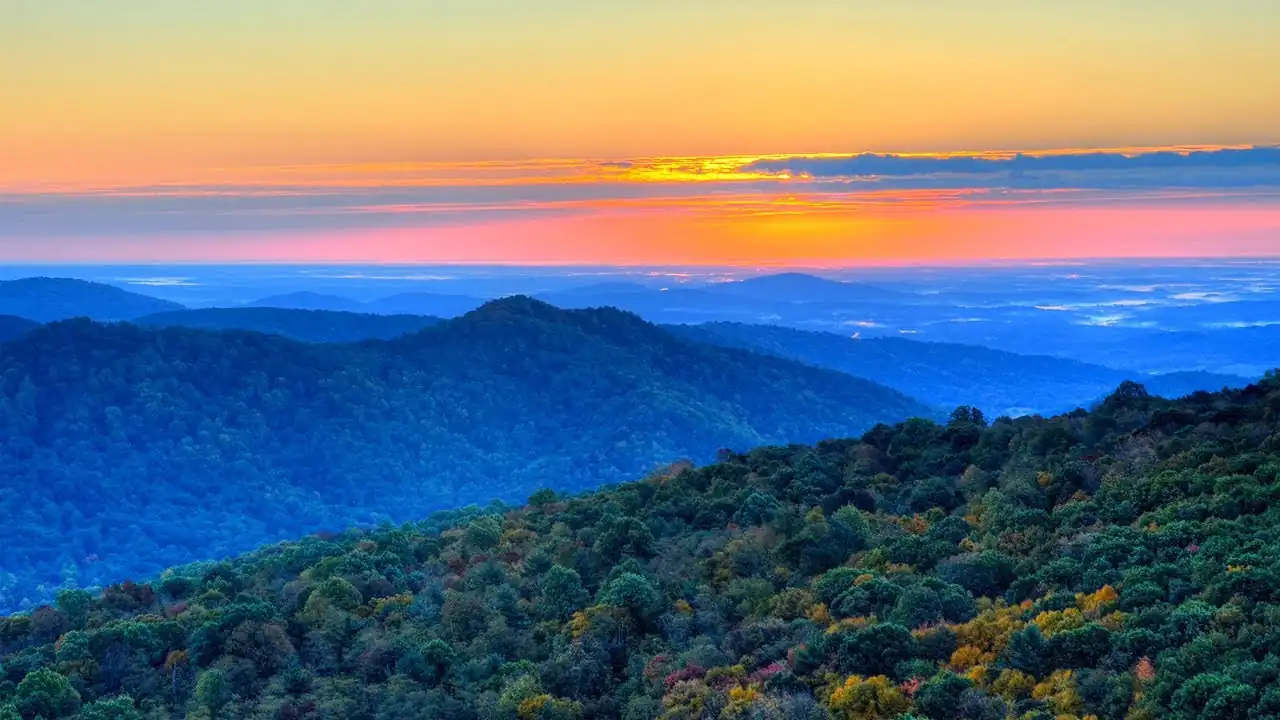
✔️ What causes the haze (isoprene explained simply)
The signature “blue” in the Blue Ridge isn’t just romantic language—it’s science. Native plant species like oaks and pines release natural compounds called isoprenes.
When sunlight hits them, the particles scatter into the air, creating a soft blue haze over the ridges. That’s why the mountains keep their dreamy tone even on clear days.
✔️ Best overlooks to see the blue ridge effect
If you want the haze to really pop, head to overl ooks along the Blue Ridge Parkway in early morning or late afternoon when the sun sits lower.
Spots near Roanoke Valley or around Catawba Mountain often reward travelers with sweeping layers of blue stretching to the horizon.
✔️ Photo tip sidebar: polarizer or not?
- Use a polarizer if you want sharper skies and less glare.
- Skip it if you want to capture the natural misty feel that defines the Blue Ridge Mountains.
- Either way, sunrise and sunset are your best friends.
Fact #2 — The Blue Ridge is among Earth’s oldest mountain systems
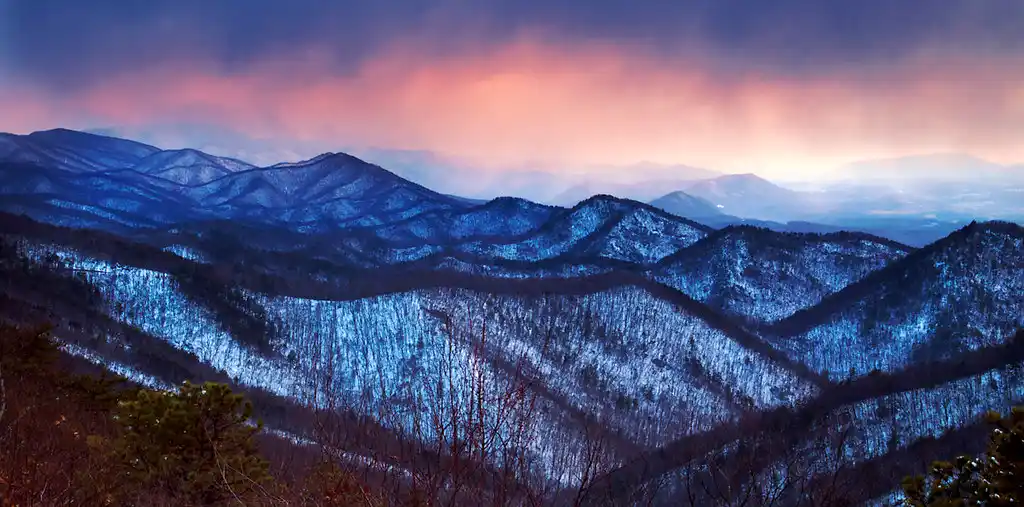
✔️ From deep-time collisions to today’s rounded summits
The Appalachian Mountains and the Appalachian chain—which include the Blue Ridge—are some of the oldest mountains on Earth.
Formed nearly a billion years ago during the Grenville-age terranes and later reshaped by the Grenville orogeny, these ridges are older than the Rockies and even the Himalayas. Over time, erosion smoothed their sharp peaks into the rounded summits we see today.
✔️ Where the ancient rocks are easy to spot
Travelers can actually see the bones of these mountains up close. Look for roadside cutouts along Skyline Drive or at overlooks near the Roanoke Valley, where metamorphosed volcanic formations and layers of sedimentary limestone peek through.
For a quick walk, trails near Catawba Mountain and the New River reveal the geology of the Appalachian Mountain chain without needing a degree in earth science.
Fact #3 — America’s most-visited park unit runs right along its spine
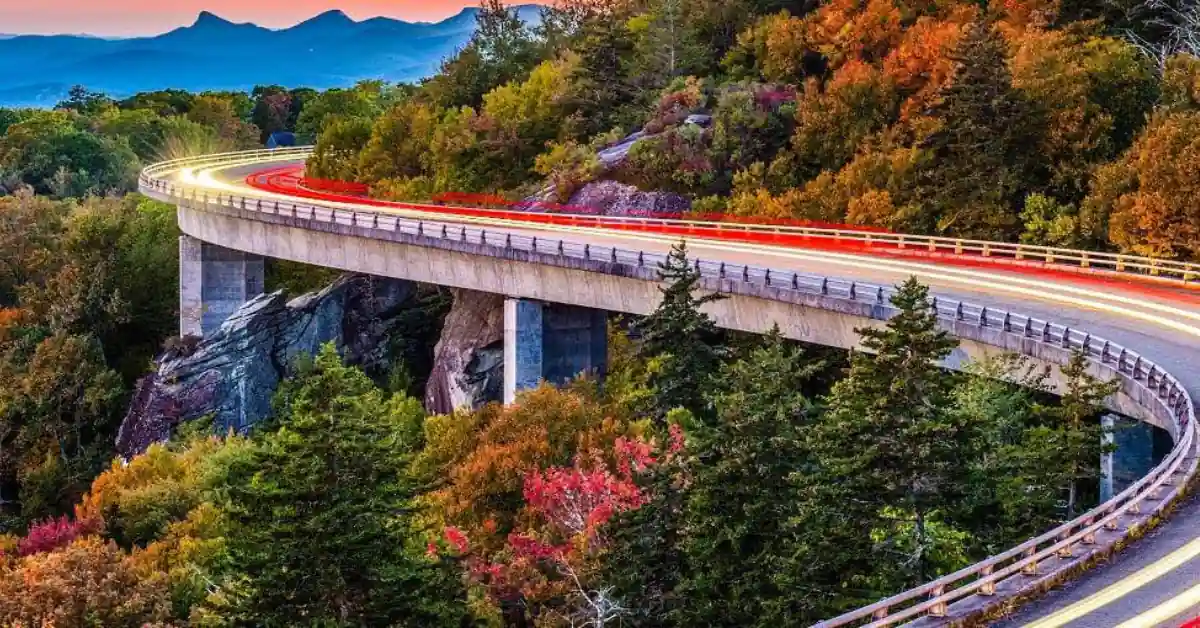
✔️ Blue Ridge Parkway at a glance
Stretching 469 miles, the Blue Ridge Parkway connects Shenandoah National Park in the north to the Great Smoky Mountains in the south. Unlike many national parks, there’s no entrance fee—just winding roads, tunnels, and hundreds of overlooks.
Speed limits hover around 45 mph, making the drive feel less like a commute and more like a slow tour through the Blue Ridge Ecoregion.
✔️ 5 mileposts first-timers should not miss
If you’re new, start with these must-stops:
- Milepost 61: Peaks of Otter with a lake and lodge.
- Milepost 213: Blue Ridge Music Center.
- Milepost 304: Linn Cove Viaduct, an engineering icon.
- Milepost 355: Access to Mount Mitchell, the highest peak east of the Mississippi.
- Milepost 420: Richland Balsam Overlook, one of the Parkway’s highest pull-offs.
✔️ Leaf-season etiquette & safe wildlife distance
Autumn brings species diversity in color, and crowds. A few tips:
- Park fully off-road at overlooks, not on shoulders.
- Keep at least 50 yards from deer and Black Bear sightings.
- Use pull-offs for photos—never stop in traffic lanes.
Fact #4 — The highest summit east of the Mississippi sits here
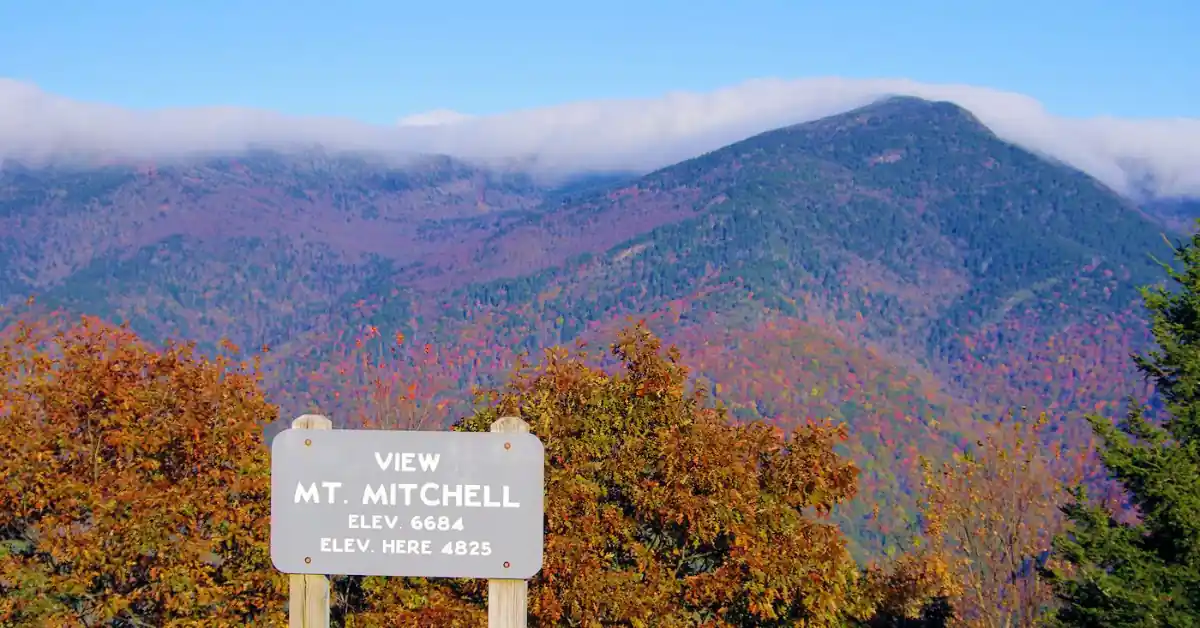
✔️ Mount Mitchell basics
At 6,684 feet, Mount Mitchell in North Carolina’s Black Mountains towers above everything east of the Mississippi.
Reached via a paved road and short paved trail, it’s accessible yet surprisingly wild. On clear days, you can spot peaks across the Southern Appalachians and even trace the ridges back to the Chattahoochee National Forest in Georgia.
✔️ A short ridge walk to a second 6,000-footer
From the summit parking lot, take the trail toward Mount Craig—another 6,000-foot peak—less than a mile away. This quick out-and-back gives you bragging rights for bagging two summits in one morning.
✔️ What to pack for 10–20°F cooler summit temps
Even in July, expect it to be chilly. Bring:
- A light jacket or fleece.
- A rain shell (afternoon storms are common).
- Snacks and water for the short hike.
Fact #5 — Two national parks bookend the range’s signature road
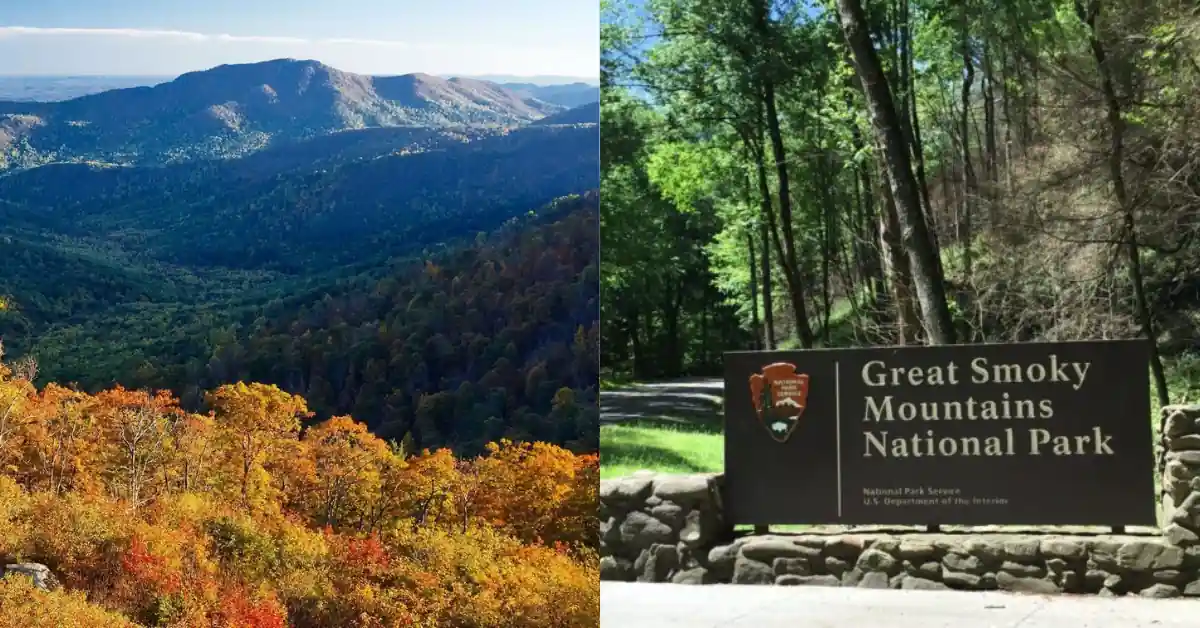
✔️ Shenandoah vs. Great Smoky Mountains: how they differ
The Blue Ridge Mountains have the rare honor of being framed by two iconic parks. Shenandoah National Park sits at the northern end, with rolling ridges and easy access from Washington, D.C. Meanwhile, the Great Smoky Mountains National Park at the southern tip is famous for its misty valleys, Cherokee history, and unmatched species diversity.
If you only have time for one, Shenandoah is more open and pastoral, while the Smokies feel wild and richly layered.
✔️ Skyline Drive vs. the Parkway
Driving Skyline Drive is slower-paced, with 75 overlooks packed into just 105 miles. It feels more compact compared to the Blue Ridge Ecoregion’s sweeping Blue Ridge Parkway.
Both roads connect seamlessly, so ambitious travelers can actually drive them back-to-back and cover nearly 600 miles of uninterrupted mountain scenery.
✔️ A 2-day sampler route that hits both ends
If you want to taste both, start at Front Royal in Virginia and follow Skyline Drive through Shenandoah. Exit onto the Parkway and head south, overnighting in the Roanoke Valley.
On day two, aim for Asheville, where you can continue toward the Great Smoky Mountains or detour into the Chattahoochee National Forest.
Fact #6 — It’s a global hotspot for salamanders (and biodiversity)

✔️ Why the Smokies teem with amphibians
Few places in the world rival the Smokies when it comes to salamanders. Constant rainfall, shaded creeks, and cool coves make the forest communities here perfect for amphibians. That’s why biologists call this corner of the Southern Appalachians the “Salamander Capital of the World.”
✔️ Where to responsibly look for wildlife on short trails
To glimpse these creatures, try damp trails near Tallulah Gorge State Park or Amicalola Falls State Park in North Georgia. Even if you don’t see salamanders, you’ll spot other endemic species that thrive in microhabitats, from delicate ferns to neotropical migrant songbirds fluttering above the canopy.
✔️ Leave No Trace for fragile creek ecosystems
Do:
- Stay on marked paths to avoid trampling mossy banks.
- Use zoom lenses for photography instead of handling wildlife.
- Rinse boots to prevent spreading spores or pests.
Don’t:
- Move logs or stones just to look for salamanders.
- Leave food scraps that attract animals.
- Forget that these ecosystems are fragile.
Fact #7 — Indigenous histories and names still shape this landscape
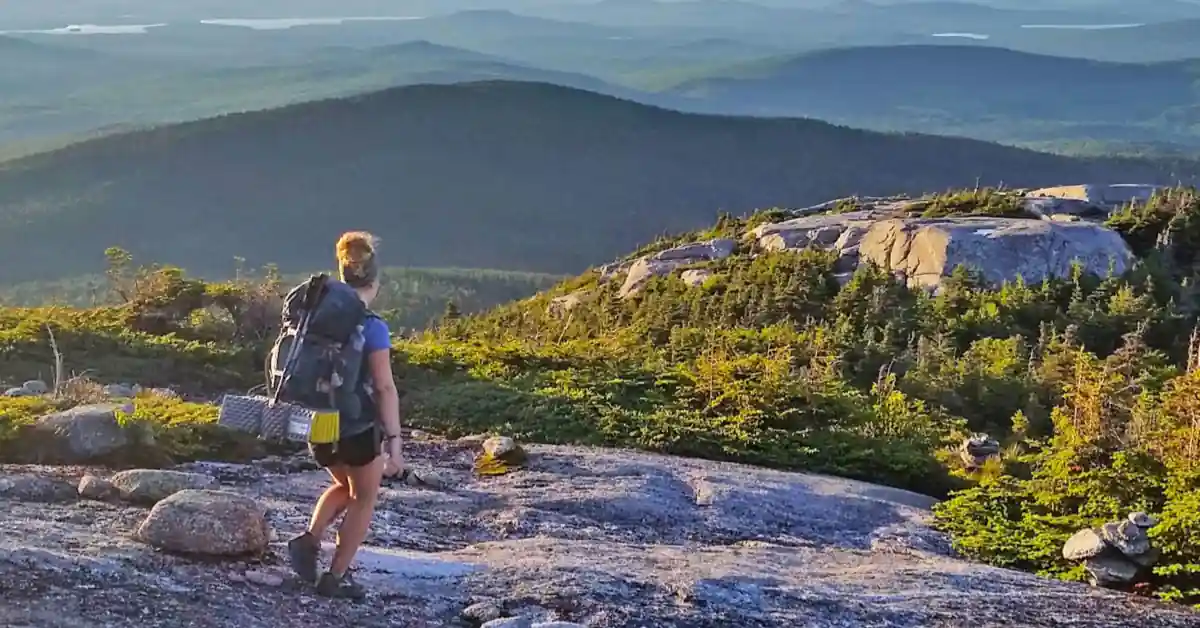
✔️ Peoples of the Blue Ridge
Before cabins and cars, Indigenous nations lived across the Blue Ridge Ecoregion. The Cherokee left lasting imprints, from trail systems that inspired modern routes like the Appalachian Trail, to place names still used today.
Visiting the Blue Ridge Mountains isn’t just about scenery—it’s about respecting a layered cultural past.
✔️ Museums, cultural centers, and ways to learn respectfully
Stop by the Museum of the Cherokee People in Cherokee, NC, or small heritage centers in Fannin County. These sites share oral traditions, artifacts, and living histories. Some even host craft demonstrations where log cabins, weaving, and storytelling bring the past into the present.
✔️ How to visit sites with care
- Read signage fully before entering sacred or historical grounds.
- Avoid climbing or taking rocks from cultural landmarks.
Fact #8 — Microclimates make weather… weird (and beautiful)

✔️ Temperature inversions, cloud seas, and why forecasts mislead
Weather in the Southern highlands is unpredictable because of the Eastern Continental Divide. Cold air often gets trapped in valleys while summits stay warmer, creating temperature inversions.
Add sudden storms and mist, and you’ll quickly learn why forecasts for the Blue Ridge Ecoregion are more of a guess than a guarantee.
✔️ Best dawn/dusk pull-offs for sea-of-clouds photos
Photographers should aim for high overlooks near Brasstown Bald or Chimney Rock Mountain Overlook. When conditions are right, you’ll see whole valleys covered in a rolling sea of clouds. For extra drama, pack a tripod and head out before sunrise.
✔️ Safety note: fog, tunnels, and speed changes on ridgelines
Fog banks are common here. Slow down in tunnels, switch on headlights, and watch for sudden speed limit changes. In heavy fog, it’s better to pull off safely at designated areas rather than risk weaving along ridgelines.
Fact #9 — Handmade traditions thrive (music, craft, and farmsteads)
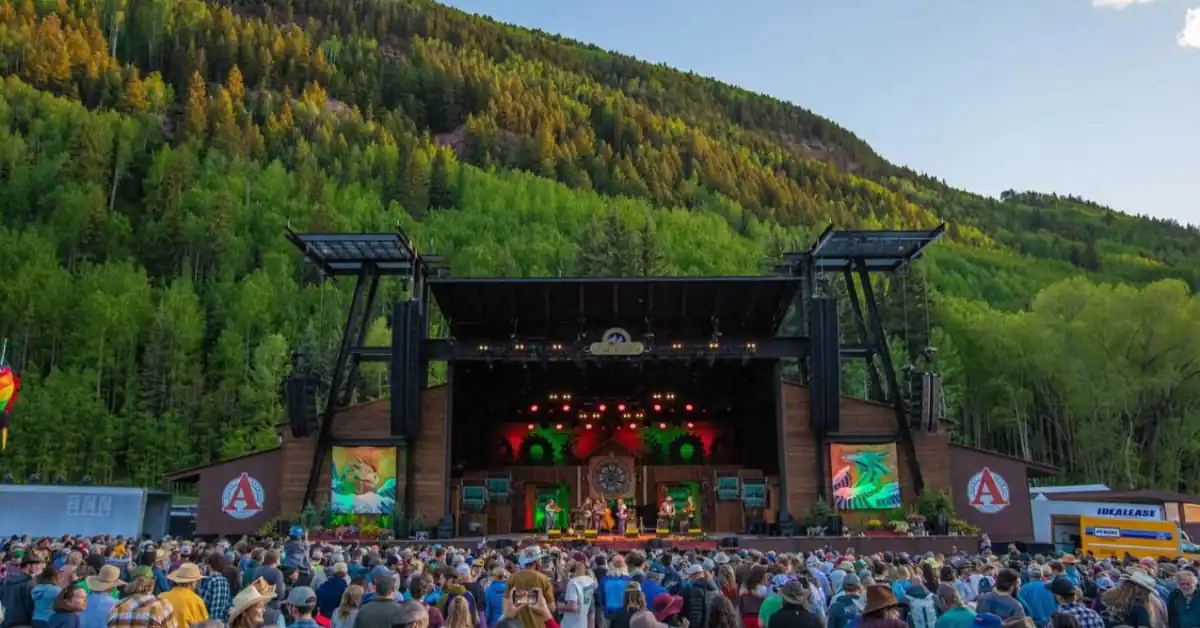
✔️ Folk Art Center, music trails, and living history stops
Mountain culture is alive in festivals and roadside stops. The Georgia Mountain Fair celebrates quilting, crafts, and bluegrass every summer.
Nearby towns also keep bluegrass music alive with jam sessions and concerts that feel more like family gatherings than formal shows.
✔️ Weekend mini-itinerary for culture + views
- Stop by orchards in North Georgia for autumn U-pick orchards experiences.
- Visit the Folk Art Center for pottery and weaving.
- Take a short drive to Apple Festival celebrations in October, or even the smaller Apple Fest gatherings that pop up in towns across the Georgia Mountains.
✔️ Where to buy local without the tourist trap markup
Check farm markets in Fannin County for crafts, jams, and handmade goods. You’ll often find family stalls set up near Morning Breeze Cabin Rentals, offering better prices and authentic quality compared to big tourist shops.
Fact #10 — The range is hardy… and vulnerable
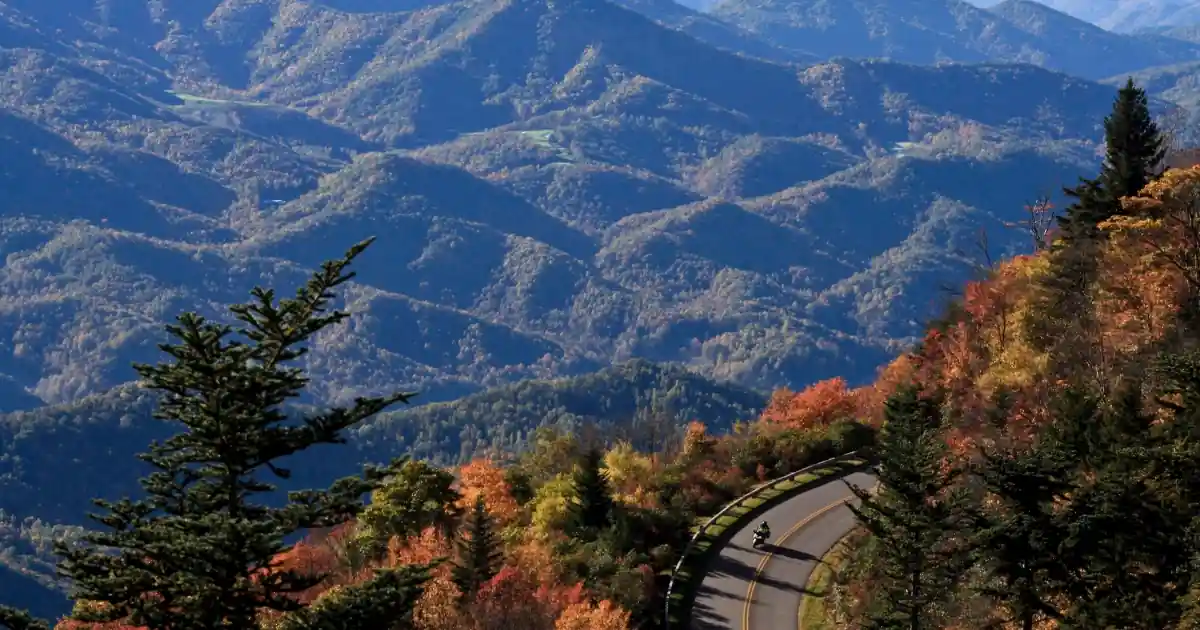
✔️ Storms, landslides, and why closures happen
Despite their age, the mountains are still shifting. Heavy rains trigger landslides that can shut down scenic roads, while winter storms sometimes close passes near Mount Rogers and other high ridges. Before setting out, check updates through the U.S. Geological Survey or local ranger stations.
✔️ Forest stressors in plain language
These forests face threats from pests, acid rain, and yes, even plate tectonics over deep time. The spread of woolly adelgid insects in spruce-fir zones has already reshaped parts of the alpine spruce-fir forest. Long-term studies by universities like George Washington University help track how native trees respond.
✔️ How visitors can help
- Stay on marked trails to protect fragile soil and endemic species.
- Rinse boots and gear to reduce risk of spreading blights.
- Support conservation by donating to National Heritage Areas or volunteering with groups like the Civilian Conservation Corps heritage projects.
Map It: A First-Timer’s “10 Facts” Road Trip
✔️ 2-day route with pinpointed stops
If you’re short on time but want the highlights, here’s a road trip plan:
Day 1 (Virginia to Roanoke):
- Start in Front Royal, cruising Skyline Drive.
- Stop at overlooks and short hikes until you reach Big Meadows.
- Continue south toward the Roanoke River and overnight in the Roanoke Valley.
Day 2 (Roanoke to Georgia):
- Head south past peaks near Mount Rogers, where cool air lingers.
- Make a stop at McAfee Knob on Catawba Mountain—one of the most photographed cliffs in the east.
- Wrap up your trip at Lake Blue Ridge or take a ride on the Blue Ridge Scenic Railway, which hugs the Toccoa River. Both offer relaxing ways to close out the journey.
When to Go & How to Plan
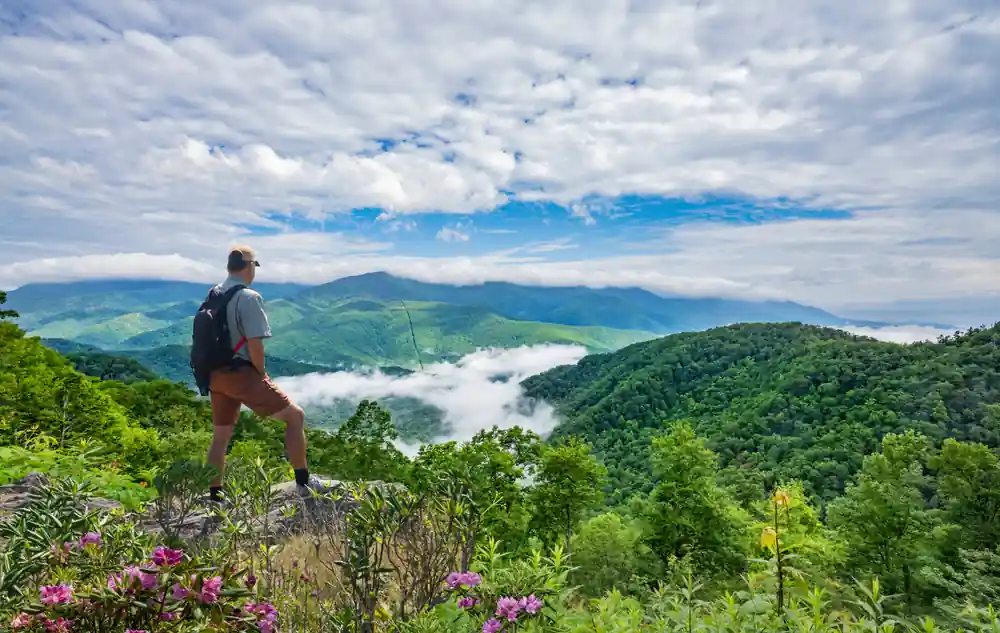
✔️ Crowds vs. color timing
Fall leaf-peeping season is the busiest, with traffic near apple orchards and Apple Festival events in North Georgia. If you’d prefer fewer people, aim for spring blooms or winter ridge views, when the air is crisp and crowds are lighter.
✔️ Parking tips, sunrise timing, fog workarounds
- Arrive at popular overlooks by sunrise to snag parking.
- If fog rolls in, head a little higher—places near Brasstown Bald or even the edge of the Cohutta Wilderness often rise above the cloud deck.
- For longer trips, stay in cabins like those from Morning Breeze Cabin Rentals, which are tucked close to Carters Lake and hiking trails.
Final Thoughts
Exploring these mountains is more than sightseeing—it’s about connecting dots between science, culture, and history.
From the chemistry behind the haze to the cultural traditions that echo through Fannin County, every stop adds texture to your trip. The range has stood for ages, shaped by zircon minerals and deep plate tectonics, yet it still feels alive with festivals, music, and conservation stories.
If you plan it right, these 10 interesting facts about the Blue Ridge Mountains will transform into unforgettable moments—whether it’s a foggy sunrise over an overlook, the sound of bluegrass music drifting through a fair, or the sight of salamanders hidden along a creek.
Respect the land, time your trip wisely, and let the ridges guide you into a slower, deeper way of traveling to these mountain getaways.
Frequently Asked Questions
1. Are the Blue Ridge and Smoky Mountains the same thing?
Not exactly. The Smokies are part of the Southern Appalachian range, but the Blue Ridge has its own identity stretching further north. They’re cousins within the same Appalachian chain.
2. What’s the highest mountain in the Blue Ridge and can I drive near it?
That would be Mount Mitchell, at 6,684 feet. You can drive almost to the top and take a short walk to the summit. On the way, look for oak-hickory forest zones that blanket the lower slopes.
3. Is the Blue Ridge Parkway really free to drive?
Yes, and that’s one of its best perks. Unlike many scenic routes, there are no tolls. The tradition of keeping it free even dates back to leaders like Thomas Jefferson, who believed in public access to natural beauty.
4. Why do the mountains look blue from far away?
It’s due to light scattering and natural hydrocarbons released by trees. These volatiles hydrocarbons create the signature haze that defines the region. Scientists have even tied the chemistry to detailed studies with the U.S. Geological Survey.
5. How long is the Parkway and how many days do I need?
It runs 469 miles. Two or three days will let you see the highlights, but if you include side trips to the Smokies or the Green Mountains, you’ll want more time.
6. What animals will I see and how close is safe?
White-tailed deer, wild turkey, and plenty of birdlife. Streams hide trout and rare fish species, while forests host bears. Keep at least 50 yards away from big animals—it protects both you and them.
7. Best month for fall color on the Parkway?
Mid-October is usually peak season. Festivals like the Apple Festival in Georgia celebrate the harvest with orchards, crafts, and mountain views.
8. Is the Appalachian Trail on the Blue Ridge?
Yes, the trail crosses many ridges and landmarks. It even starts in Georgia at Springer Mountain, before winding north for over 2,000 miles.
9. Can I camp anywhere along the Parkway?
No, but there are designated campgrounds and forests. Places like Black Rock Mountain State Park or the Cohutta Wilderness offer rustic campsites close to ridgeline trails.
10. Are there closures after big storms and where do I check?
Yes, storms sometimes cause landslides. Before traveling, check updates via the Parkway website or local ranger stations. Airports like Roanoke-Blacksburg Regional Airport also post regional alerts.
11. Bonus — Who are some notable figures tied to the Blue Ridge?
Explorers like Hernando de Soto once passed through these mountains. Cultural icons such as Black Elk are often quoted in regional centers. Local names like Bill Oyster (a renowned fly rod maker in Fannin County), historian Richard Tollo, and even farming brands like Gold Kist left their marks on mountain life.
12. Do the Blue Ridge have connections to old transport and heritage?
Absolutely. The Conestoga wagon routes once threaded nearby valleys. Today, heritage projects honor this history through National Heritage Areas.
13. Are the Blue Ridge Mountains recognized in science systems?
Yes. They’re studied in frameworks like the Omernik Ecoregion System, which classifies the Blue Ridge Ecoregion as a unique biome with rare flowers, including species like Blue Ridge Mountain Flowers.
14. Random but real: Why do some websites ask me about “security” when booking cabins?
That’s just modern tech. Booking platforms and rental sites now require website security and user verification to protect travelers. Don’t worry—it’s more about digital safety than mountain legends.
Recent Posts
 Tubeseferi: 7 Must-Know Features for Smart City Travel in 2025
Tubeseferi: 7 Must-Know Features for Smart City Travel in 2025 What Is Antolohe? Hidden Travel Meaning Revealed for 2025
What Is Antolohe? Hidden Travel Meaning Revealed for 2025 How to Become a Travel Agent Without Experience?
How to Become a Travel Agent Without Experience? 15 Best Airlines for Long Flights in 2025: Comfort, Cuisine, and Sky-High Service
15 Best Airlines for Long Flights in 2025: Comfort, Cuisine, and Sky-High Service Day Trips from Buenos Aires: Surprising Routes Off the Tourist Trail
Day Trips from Buenos Aires: Surprising Routes Off the Tourist Trail








